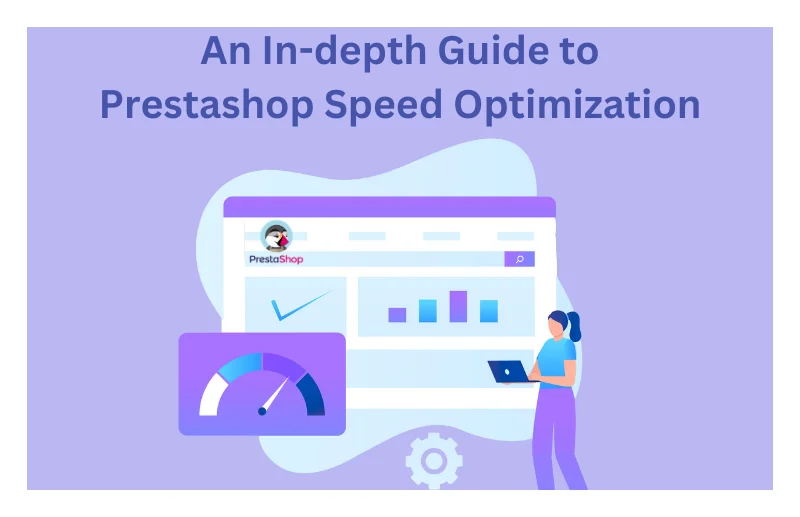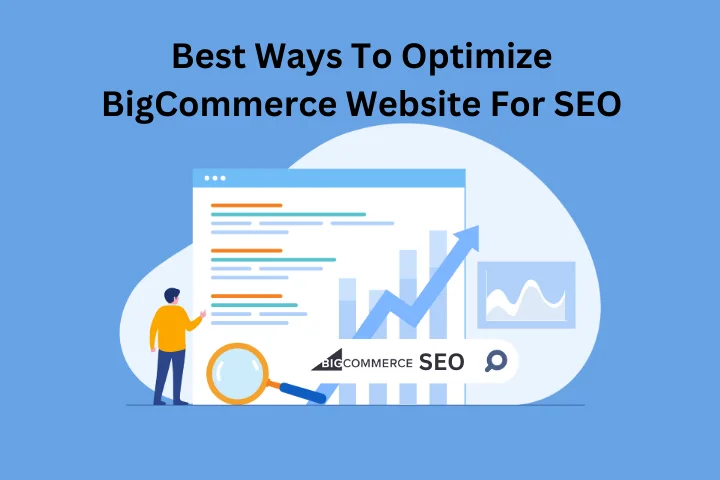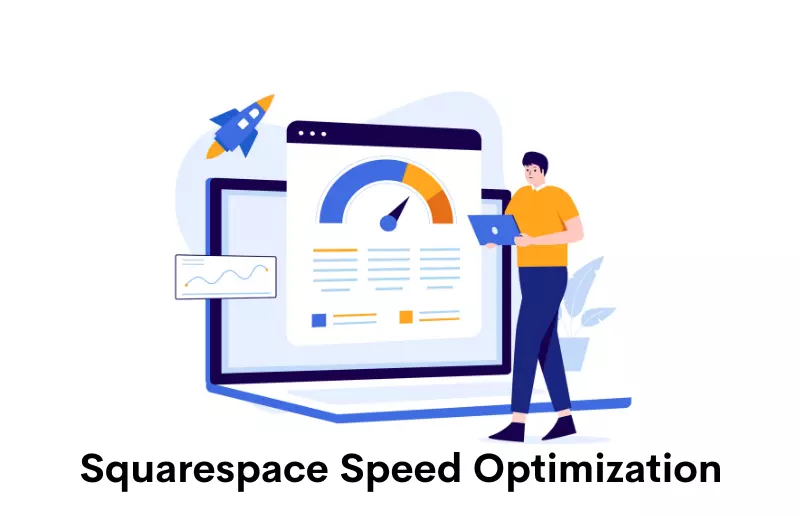1. Introduction
In the fast-moving digital age, the speed at which a website loads determines the efficiency of its e-commerce store. Customers have high expectations when it comes to website loading time. They are more rely on leaving a slow-speed website. This can result in the website’s reputation and performance.
In ecommerce platforms, Prestashop is considered to be the top platform for its multiple features of open-source e-commerce solutions. It provides a foundation for online stores, and optimization of website load time is crucial. Therefore, in this blog, we will explain Prestashop speed optimization, the factors that affect it, and finally, how to fix it. So, Prestashop is not fully customized for speed, and numerous factors can affect its performance, which we have discussed below.
2. Understanding Prestashop Speed Optimization
Prestashop is an excellent choice for businesses looking forward to expanding their online market. It provides a user-friendly interface with an extensive range of features. However, several factors hinder its performance, and it is essential to be aware of them to minimize their effect.
Hosting environment and server configuration:
The first and foremost step is to choose the right hosting plugin. The performance and services web hosting provides can significantly impact your website’s reach. If you are running on shared resources, multiple websites sharing resources on the same server may not provide enough. Shifting to a Virtual Private Server [PVS] or dedicated server can lead to better Prestashop speed optimization.

Want to read this blog offline?
No worries, download the PDF version
now and enjoy your reading later…
 Download PDF
Download PDF Theme and template choices:
Themes and templates are essential elements to choose carefully. You must remember your website goal and objective accordingly and select the theme and template. If your website sells childcare products, it must be filled with joyful colors representing your brand’s purpose. Some themes look good, but they have been optimized with unnecessary code, which leads to a slow loading speed. Optimizing for lightweight themes can solve this problem.
Image optimization:
Uploading large and unoptimized images more often slows down website speed. You must ensure the images you upload are not a high resolution; properly optimized images by compressing and resizing them can improve website load time optimization.
Third-party modules and plugins:
If your store operates on Prestashop, you will benefit from using a wide range of plugins and third-party modules. Sometimes these modules and plugins are overhead and decelerate website loading speed. It’s essential to carefully choose the modulus based on their necessities and performance that does not impact your website speed.
Database performance:
Database refers to clear optimization of data; it is a crucial component of any website. In Prestashop, some database is built on, but unoptimized and slow database affects your store’s website speed and overall performance. Regulating monitoring or cleaning up unnecessary data can contribute to faster loading times.
Here, these are the factors you have to consider while setting up your business on Prestashop. Website loading speed not only affects a business’s reputation but also affects its ranking on search engines.
3. Correlation Between Website Speed and SERP Rankings
Apart from improving user experience, Prestashop speed optimization also plays a vital role in enhanced search engine rankings. Search engines like Google consider it an essential aspect; according to this, a sow-loading website may appear at the lost pages, where users usually don’t go. On the contrary, faster websites are more likely to rank higher on search results, which leads to increased organic traffic and visibility of online stores.
For effective management of an online store, its speed analysis is crucial. If you don’t conduct a speed analysis, you will not get the exact speed of your website and what you have to work on to improve it.
4. Analyzing Your Website’s Current Speed Performance
To start with the Prestashop speed optimization process, you must know its current loading time. There are several tools available that can help you analyze your website’s speed metrics. These tools are Google PageSpeed Insights, GTmetrix, and Pingdom.
While using these tools, you will get a depth insight report on various aspects of your website, such as:
Page load times: The time your website takes to load fully on the user’s browser.
Page size: The size of your website, including all the elements like images, CSS, JavaScript, etc.
Recommendations for improvement: After that, tools provide where your website lacks performance and how to improve it effectively.
Now, once you have done testing, it’s time to understand the result.
Interpreting and understanding the speed test results
Once you have done with speed tests, time for interpreting or understanding the results starts. The tools will give you enough data on how your website performs on all browsers and where it faces speed-related issues.
For example, if your website takes time to load, it will indicate and assess what is causing it, such as images, codes, files, etc. Then you have to minify the CSS and JavaScripts files to reduce their size. Additionally, the tool shows the bottlenecks.
Identifying bottlenecks and areas of improvement in Prestashop
The tools also provide information on specific bottlenecks and area that needs improvement. These drawbacks can be related to hosting, themes and template choices, images, or third-party modules or plugins.
By identifying them, you can focus specifically on the elements that require attention most. It will help you in website load time optimization. For instance, if your current hosting plan is the reason for the slow website speed, consider shifting to an automated hosting server. Or if third-party modules cause slow speed, we will research whether they are necessary or not.
It’s essential to explore alternatives with better performance. Now, we have finally reached the strategies you can use for Prestashop speed optimization.
5. Implementing Website Load Time Optimization Strategies
Once you have tested your current website’s speed and found the bottlenecks, now, it’s time to implement various website load time optimization strategies.
Choosing the right web hosting for Prestashop
Choosing the right and beneficial hosting service is essential; as discussed earlier, shared hosting may not provide the required resources for your online Prestashop. Selecting the appropriate web hosting provider is the right decision.
Upgrade to a VPS or dedicated server that offers multiple resources with low traffic. Consider various factors while choosing, like server location, uptime guarantees, and customer support, and take reviews from their existing users.
Selecting a lightweight and optimized theme for Prestashop
The theme you choose must be your online store’s overall look and feel. Your website’s template must represent your brand itself and convey your brand message appropriately. While selecting themes and templates, prioritize lightweight and charming options that focus on speed and performance.
Optimizing images and media for faster loading times
High-resolution media can have a large file size that directly slows down website loading time, especially on slow internet connections. Try to use responsive images that adapt to different device sizes and serve the right image size for each screen.
Managing and streamlining third-party modules and plugins
Before choosing it, find whether it is essential or not, evaluate the list of modules and plugins remove any that are no longer needed. However, too many plugins affect the website’s speed efficiency, so checking their impact on performance is essential.
These are basic strategies you can consume for Prestashop speed optimization. Thus, there are some other tips you can explore for advanced enhancement.
6. Advanced Techniques for Prestashop Speed Optimization
When you have implemented the fundamental optimization strategies, consider more advanced tips for further optimization of your Prestashop website.
Content Delivery Network (CDN) integration
CDN distributes a server network, which contains copies of your website data like images, CSS files, javascript files, etc. It facilitates the sharing of assets from the server closest to your user. CDN reduces the latency and improves loading times.
Enabling browser caching and server-side caching
It is a technique that stores recently accessed data for a short period, reducing the need for repeated server requests. Server-side caching involves storing web pages or database queries temporarily to eliminate the need for downloading and laying them faster in upcoming searches.
Minifying CSS, JavaScript, and HTML files
It involves removing unnecessary data, characters, whitespace, comments, and line breaks from CSS, JavaScript, and HTML files. By reducing their size, you can enhance their downloading, decrease the file size, and improve website loading time.
Leveraging lazy loading for images and media
Lazy loading is a tip where the visibility of some elements is displayed late, such as images and videos until all the necessary data appears on the user’s screen. It prioritizes the essential content first and then loads the images and videos.
You can choose these basic and advanced techniques based on your website needs. Now measure your website’s enhanced performance.
Quick Fixes for Slow Prestashop Websites: Elevate Your Game!
Fasten up Prestashop Store7. Measuring and Monitoring Performance Improvements
After implementing the various Prestashop speed optimization strategies, monitoring and measuring performance regularly for improvement is crucial. It involves three basic tasks:
- Revisiting website speed test tools such as Google PageSpeed Insights, GTmetrix, or Pingdom.
- Benchmarking and comparing performance before and after optimization to identify the area that still requires improvement.
- Website load time optimization is not a one-time process. Continuous monitoring and maintenance are essential for sustained speed improvements.
Apart from DIY solutions, you can utilize speed optimization tools available online. Website Speedy is one of the best tools that help you boost your website speed significantly. It is a SaaS-based tool that boosts your website by eliminating render-blocking. This tool is specifically designed for Ecommerce stores to boost their performance.
8. Conclusion
In this write-up, we have explained the importance of Prestashop speed optimization. By understanding the factors, you can use to magnify your website’s reach, ranking on search engines, visitor engagement, and conversion rate.
Regularly monitor your website speed through various tips, as the blog mentions. Implement the required strategy and continue monitoring and maintaining the website’s performance to enhance the seamless shopping experience of your customers.
Therefore, embrace the power of your Prestashop by implementing website load time optimization, and flourish your brand in the fierce online marketplace.
August 10, 2023
Leave a Comment
















































